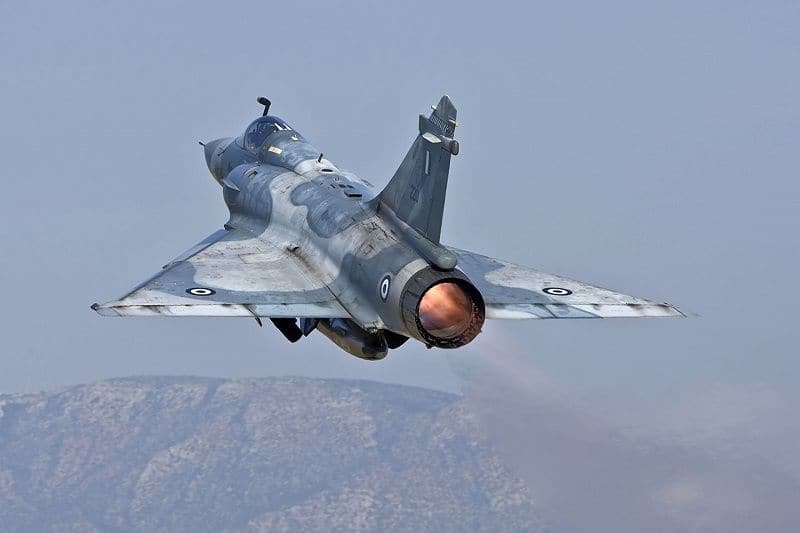The Indian Air Force used their multiple assets to carry out a strike at a terror facility at Pakistan's Balakot area on Tuesday, which killed 300 Jaish-e-Mohammed (JeM) terrorists, trainers and commanders
New Delhi: The Indian Air Force used their multiple assets to carry out a strike at a terror facility at Pakistan's Balakot area on Tuesday. Over 300 Jaish-e-Mohammed (JeM) terrorists, trainers and commanders were killed in the attack. Here are the aircraft used by the IAF to carry out the operation.
Mirage-2000 fighter jets
Twelve Indian Air Force Mirage-2000 fighter jets were used in the operation. Mirage-2000 fighter jet is a multirole fighter jet built by French company Dassault aviation and was first commissioned in 1985. It is the same jet that played a decisive role, 20-years-ago, during the Kargil War. Besides the Jaguar, the Mirage-2000 is the only other IAF plane capable of delivering nuclear bombs.
The Mirage-2000 is a single-engine delta-wing (triangle shaped) fighter jet. It can carry an impressive 14,000 lb (pounds) of weapons. A pound is equal to 0.454 kg. It has a maximum speed of Mach 2.2 (2.2 times the speed of sound) and a combat range of nearly 1,000 miles. It has nine pylons on which it can carry a host of different advanced air-to-air, air-to-surface missiles and bombs, targeting pods, and external fuel tanks.
Sukhoi
As a dozen Mirage-2000 went inside Pakistan air space and caused a massive damage to the JeM terror facility, they were escorted by four Sukhoi Su-30 fighter jets. The Russian origin aircraft, which forms the bulk of the IAF’s fleet, took off at the same time and were giving a backup to Mirage jets. They were deployed to respond to retaliatory action from Pakistan Air Force but that was not needed as Mirage returned home safety.
The Sukhoi Su-30 is the most advanced fighter jet with the IAF. It is the primary air to air and air to ground strike machine. The Su-30 is built in India by HAL under license agreement with Russia’s Sukhoi. The Su-30MKI is exclusively used by India and there’s an estimate that IAF has 290 operational units of 30MKI till now. The first unit was inducted in 2002. The Sukhoi Su-30MKI has a top speed of Mach 2 (2120 kmph) and has a maximum take-off weight of 38,800 kg. The jet can carry a wide range of equipment from radars to missiles, bombs and event rockets.
AWACS
The Israeli Phalcon Airborne Warning and Control System (AWACS) provided the radial cover to the Mirage 2000 jets. It was deployed to monitor the mission and showed that no aircraft was within 100 km while the operation was carried out. It played a significant role as the radars pinpointed the position and activity of Pakistani fighter aircraft on all their bases and gave a go ahead to the Indian planes.
AWACS is considered critical in modern warfare because they can detect and track incoming fighters, cruise missiles and drones much before ground-based radars, direct friendly fighters during air combat with enemy jets, and keep tabs on enemy troop build-ups and warships. The IAF has only with three Phalcon AWACS, with a 400-km range and 360-degree coverage.
Netra
The home-made eye in the sky, Netra, was also in the air assisting Mirage-2000 in carrying out successful strike. The Netra, an airborne early warning and control (AEW&C) aircraft, was providing surveillance and radar coverage about Pakistan Air Force movement.
The Netra has been designed and developed by scientists of the Defence Research and Development Organisation (DRDO). The plane can also alert pilots of incoming missiles as it has infrared detection capability that can see the hot exhaust of the missiles. The AWACS can accommodate five flight controllers who can directly communicate with ground controllers and airborne pilots as they fly towards the target.
IL-78 Refueller aircraft
At the time of operation Balakot, the four engine Russian IL-78 aircraft which are based out of Agra were kept ready to give a backup by refuelling jets if the operation goes for the longer time.
#MakingHistory : MID AIR REFUELING TRIALS OF LCA WITH IL-78 MKI - On 04 Sep 18, IAF successfully carried out the 1st ever Air to Air refueling of the indigenously build fighter aircraft Tejas MK1 with an IL-78 tanker aircraft.
— Indian Air Force (@IAF_MCC) September 5, 2018
Details on https://t.co/okJbv3h7IU pic.twitter.com/gjN8imATPS
IAI Heron
Heron drone from secret airfield conducted real-time surveillance along LoC. The IAI Heron (Machatz-1) is a medium-altitude long-endurance unmanned aerial vehicle (UAV) developed by the Malat (UAV) division of Israel Aerospace Industries. It is capable of Medium Altitude Long Endurance (MALE) operations of up to 52 hours' duration at up to 10.5 km (35,000 ft).
The Heron navigates using an internal GPS navigation device, and either a pre-programmed flight profile (in which case the system is fully autonomous from takeoff to landing), manual override from a ground control station, or a combination of both.
Last Updated Feb 27, 2019, 3:33 PM IST











![Salman Khan sets stage on fire for Anant Ambani, Radhika Merchant pre-wedding festivities [WATCH] ATG](https://static-ai.asianetnews.com/images/01hr1hh8y86gvb4kbqgnyhc0w0/whatsapp-image-2024-03-03-at-12-24-37-pm_100x60xt.jpg)
![Pregnant Deepika Padukone dances with Ranveer Singh at Anant Ambani, Radhika Merchant pre-wedding bash [WATCH] ATG](https://static-ai.asianetnews.com/images/01hr1ffyd3nzqzgm6ba0k87vr8/whatsapp-image-2024-03-03-at-11-45-35-am_100x60xt.jpg)



